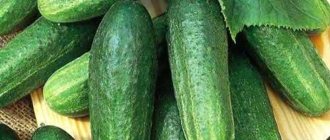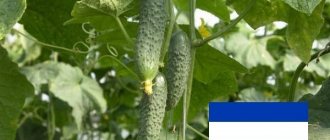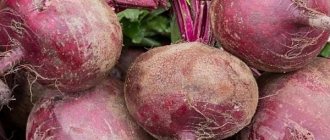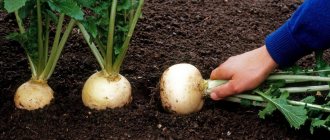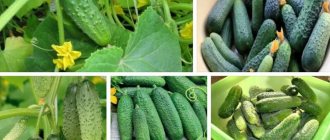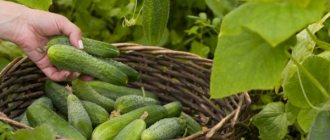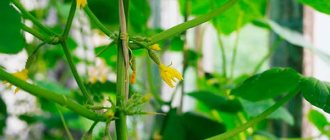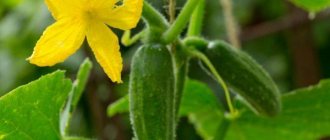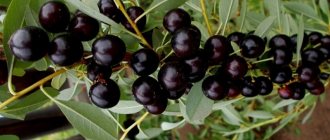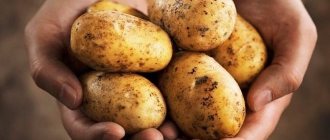The northern and eastern regions of the country have very specific climatic features: cold winters and short summers. Therefore, plants of Siberian selection do not have a long period of growth and fruiting. Under such weather conditions, it is quite problematic to grow from seeds those varieties of vegetable crops that, for example, are popular among amateurs in the southern regions and the central Black Earth Region. That is why scientists and breeders have developed hybrids and varieties of cucumbers that would grow well and bear fruit (the most productive) in cold regions. These are, most often, those that know how to adapt to the variability of the external environment and are not afraid of small temperature fluctuations. In the conditions of Siberia, the Urals and the Far East, good yield per unit area can be obtained in open-air beds, but in a greenhouse it will be much higher. One of the components of success is choosing the right seeds. The best hybrids and varieties of cucumbers will be discussed in this article.
How are Siberian cucumbers different?
The difference between a Siberian cucumber and a regular one is that the former is always a hybrid. Due to the fact that this vegetable crop is heat-loving, the harsh Siberian climate is not the most favorable place for its cultivation.
Hybrid varieties of cucumbers are not only able to grow and develop at low temperatures, but also bring a rich harvest. As a rule, most Siberian varieties do not need pollination, since bees help them in this process. The ripening process of cucumbers in hybrid varieties takes no more than 1.5 months, which is very important, given the short summer of Siberia.
You can distinguish a hybrid variety of cucumbers from a regular one by the additional symbol “F1”. It is an indicator that the variety was obtained by crossing 2 varieties.
The taste qualities of hybrid cucumbers do not have any distinctive features. But there is no need to leave the seed part for seedlings, since it is not designed for growing seedlings.
Varieties ideal for Siberia
Cucumbers come in a wide variety of varieties and the conditions for growing them also vary. You will find out below which varieties of this vegetable are suitable for Siberia.
Moment
It was developed in the Far East in the 80s. Recommended as a crop grown outside greenhouse conditions. This species has gained popularity due to the high marketability of the fruit.
Main characteristics:
- The variety is mid-early, the greens ripen on the 48th day from the moment the seedlings appear.
- The fruits are tubular in shape, the size does not exceed 22 cm. The maximum weight of greens is 125 g, the minimum is 104 g. The diameter of the cucumber does not exceed 4.5 cm. The peel is smooth with practically no tubercles.
- The bush is medium-sized. The length of the main stem is from 112 to 179 cm. The leaves are medium-sized, dark olive in color, round. The ovary is formed up to 7 cm. The side shoots are strong, about 6 pieces.
- Diseases. Viral diseases pose a threat to the plant. Preventative measures with light chemicals are required.
- Productivity. Pollination by bees. The harvest is stable, from 1 sq. m up to 15 kg.
- Purpose – salting, canning.
Manul
One of the main advantages of this variety is its shade tolerance. Shrubs continue to grow and develop at their usual pace, even in the absence of sun for a long time. On the contrary, excessively warm soil helps reduce the number of ovaries.
Main characteristics:
- The variety is mid-season; cucumbers ripen 45 days after the seedlings appear.
- Fruit. The maximum size is 22 cm, the minimum is 9 cm. Weight varies from 130 to 210 g. Cucumbers have a light greenish tint and an oblong shape.
- Bunch shrub, no more than 6 ovaries.
- Diseases. Viral and infectious diseases pose a danger. Preventive measures are necessary.
- Productivity – up to 32 kg per 1 sq. m.
- The purpose is universal.
The most productive varieties for Siberia
To get a good harvest of cucumbers, you need to choose the right variety. You will find out which one is suitable for Siberia further.
Claudia
The advantage of this variety is its good immunity to low temperatures.
Main characteristics:
- The variety is mid-season, fruiting occurs on the 54th day from the moment of the first shoots.
- The fruits have an ellipsoidal shape, the length does not exceed 11 cm. The maximum weight of a cucumber is 95 g. The peel is tuberous with a barely noticeable fluff. The pulp is crispy and has a sweet aftertaste.
- A tall shrub with looping shoots, suitable for keeping in a greenhouse. Strong roots and well developed main stem. The leaves are not large, greenish in color. There are no barren flowers.
- Diseases. The plant is not afraid of viruses and infections. But sensitive to the sun, high risk of sunburn.
- Productivity is stable, up to 27 kg per 1 sq. m.
- Purpose: canning.
Brigantine F1
This variety responds well to mineral-based fertilizers and timely watering with warm, settled water. With proper care, the bushes bear fruit well and do not get sick.
Main characteristics:
- The variety is early ripening.
- The fruits are ellipsoidal, rich olive in color with massive tubercles on the skin. The maximum length of a cucumber is 14 cm, the minimum is 9 cm. The diameter of the fruit is at least 3.5 cm.
- Small shrub. The length of the main stem is up to 90 cm. The leaves are not large with a rounded edge. Ovary length – 5 cm.
- Diseases. The plant is practically not susceptible to viruses and infections.
- Productivity. Pollination by bees. Capable of producing up to 34 kg of harvest per 1 sq. m.
- Purpose: canning, salting.
Alliance
It has 2 varieties from different manufacturers. The first was invented by a Russian breeder from Rostov-on-Don and is used in areas with cold climates. The second is produced by a Dutch company and is a hybrid variety.
Main characteristics:
- The variety is early ripening, fruiting occurs on the 56th day (and is repeated several times during the season).
- The fruits are tubular with a strong skin. The surface is ribbed, bright pistachio in color with barely noticeable stripes. The shape of the cucumber is slightly elongated. The maximum size of the fruit is 19 cm. The weight of the cucumber does not exceed 120 g.
- The shrub is spreading, with high branching. The leaves are voluminous with a wavy edge, of a dull greenish tint. From 2 to 4 ovaries develop on one stem.
- Diseases. The plant has good resistance to various types of diseases.
- The yield, with proper care, is at least 18 kg per 1 sq. m.
- The purpose is universal.
Emelya
In 2003, the variety was included in the state register of the Russian Federation, and subsequently gained enormous popularity among a large number of gardeners.
Main characteristics:
- The variety is early ripening, the greens ripen 44 days after the appearance of the first seedlings.
- The fruits have an oblong oval shape. Massive tubercles are randomly located on the peel. The weight of the greens is no more than 140 g. The maximum size is 16 cm with a diameter of 4.5 cm.
- The shrub is vigorous, shortened, bunched. The foliage has a bright green color and a wavy shape.
- Diseases. Due to its developed cold resistance, the vegetable crop has strong immunity. Therefore, he gets sick extremely rarely.
- Productivity. Bees are not required for pollination. From 1 sq. m comes out to more than 16 kg.
- The purpose is universal.
Planting in a greenhouse
Growing cucumber crops in cold conditions is possible. Summer is shorter than in the south, but this is not a problem, especially for those who prefer to use greenhouse conditions, in which planting is possible as early as the 15th of May. If the greenhouse is heated, then planting is permissible at the end of February.
In order for the harvest to really amaze, you need to familiarize yourself with the characteristics of cucumbers:
- The growth of the bushes continues until the average daily air temperature drops to +15C.
- The root system is considered the most susceptible to frost and cold, so you need to take care of covering them immediately after the seedlings are transferred to the ground.
- Regular feeding is required, for which mineral and organic fertilizer is suitable.
- Many nodes form on the plant, among which there may be inflorescences, both male and female, and you can also see tendrils, lateral lashes and many leaves.
- As humidity levels increase, another plant may well emerge from the node.
- With reduced acidity, vegetables begin to hurt, rot, and bitterness develops in the fruits.
Attention! Planting is prohibited in loamy soil, which will hinder the development of the root system. The land needs to be prepared in advance
It is forbidden to plant a crop in the same place for several years in a row. If the greenhouse has small soil, then every year you need to either add an additional layer of soil or change the planting location. Otherwise, the yield level and product quality will decrease
The land needs to be prepared in advance. It is forbidden to plant a crop in the same place for several years in a row. If the greenhouse has small soil, then every year you need to either add an additional layer of soil or change the planting location. Otherwise, the yield level and product quality will decrease.
Planting should be done vertically, for which you need to install bars made of metal or wood and tie strong threads with a special mesh onto them. Each individual bush must have its own support, which eliminates tangling of lashes from different shoots. If the tendrils catch on a support from another seedling, they must be carefully untangled.
Before planting, disinfect the seed material and the soil itself. To do this, use a manganese solution. After processing, the seeds must be thoroughly dried and only then can they be placed in the soil. When growing cucumbers in a greenhouse, you need to control the level of humidity and air temperature. Acceptable values are +15+25С. In the warm season, you need to constantly open the window and doors.
Water abundantly, but rarely. As a rule, water is needed when the top layer of the bed dries out. Excess moisture will lead to powdery mildew and rot. Regular fertilization will ensure that your cucumbers are tasty, crispy and beautiful.
The best self-pollinating varieties
Today, many gardeners choose self-pollinating varieties of cucumbers. You will find out below which ones are best suited for Siberia.
April
It was first introduced in Moscow. Since 1978, it has been allowed for planting in cold regions of Russia. This variety shows the best yield indicators when planting crops in covered greenhouses, but can also be kept outdoors.
Main characteristics:
- The variety is early ripening, the greens ripen 40 days after the seedlings emerge.
- The fruits are oblong tubular in shape. The peel is rough with pronounced tubercles. The maximum weight of greens can reach 300 g, the minimum - 135 g. Length from 16 to 27 cm.
- A medium-climbing shrub with lateral branches.
- Diseases. The plant is highly resistant to viruses and infections. There is a danger of root rot from overwatering.
- Productivity. From 1 sq. m accounts for about 14 kg.
- Purpose: fresh consumption.
Friendly family
This variety is widely used in agricultural production and private garden plots. Fruits equally well both indoors and outdoors.
Main characteristics:
- The variety is mid-season, cucumbers ripen on the 49th day.
- The fruits are tubular, with a ribbed surface. The size of the cucumber varies from 10 to 14 cm, the diameter is no more than 4 cm. The weight of the fruit can reach 105 g. The peel is dense with whitish stripes. The pulp is characterized by meatiness without bitterness.
- The shrub is medium-sized, medium-branched. Lack of barren flowers. The leaves are not large, colored in a rich green shade. The main stem forms no more than 5 ovaries, side shoots about 9.
- Diseases. In the absence of proper plant care, there is a risk of contracting viral diseases common to vegetable crops.
- Productivity. Pollination occurs without the participation of bees. The harvest is stable, from 11 kg per 1 sq. m.
- Purpose – salting, canning.
Zozulya F1
This variety is not designed for outdoor cultivation. In the greenhouse, greens grow and bear fruit better.
Main characteristics:
- The Zozulya variety is early ripening; green plants ripen 49 days after the first seedlings emerge.
- The fruits have a dark olive hue. The shape is tubular, there is a subtle bend. There are small bumps on the peel. The length of the fruit varies from 15 to 26 cm. The minimum weight of a cucumber is 170 g, the maximum is 280 g. The pulp is characterized by juiciness, density and a sweet aftertaste.
- The shrub is weakly looped. It develops with the introduction of additional mineral-based fertilizers. The side branch is limited.
- Diseases. The vegetable crop has strong immunity to almost all viruses, with the exception of Fusarium.
- Productivity is high, from 1 sq. m yields from 18 to 21 kg of cucumbers.
- Purpose: It is preferable to consume fresh, but it can be used for pickling.
Gerda
"Gerda" is a gherkin variety. Keeping the culture is permissible both in indoor and outdoor greenhouses.
Main characteristics:
- The variety is early ripening, greens ripen in 41 days.
- The fruits are short. The size of the cucumber does not exceed 11 cm. Cucumbers have a tubular shape. The peel is rough, the tubercles are arranged in a chaotic manner. The weight of greens varies from 68 to 74 g.
- The shrub is medium-sized, bushy.
- Diseases. The plant is practically not susceptible to viral and infectious diseases. With timely prevention, the plant is no longer extremely rare.
- Productivity. Despite the miniature size of the fruit from 1 sq. m yields about 15 kg of cucumbers.
- Purpose: salting.
Landing
Planting cucumbers can be done in two ways:
Despite the short summer in Siberia, both methods are suitable for growing this crop.
When to plant
The most optimal time for planting a crop is the period when the threat of frost has passed - at the end of April or beginning of May. The suitable temperature for plant development is +21 – +25°C during the daytime and not lower than + 15°C at night.
Night temperatures below +8°C can negatively affect crop yields or even destroy crops. To prevent plants from overcooling, it is recommended to cover the beds with film or mulch.
Attention! If the seedling sowing method was chosen, then the seedlings begin to be planted in separate containers or cups 2–3 weeks before planting in the ground
The nuances of planting in open ground
Growing crops in open ground and in a greenhouse are somewhat different. The main differences include:
- in open beds you can use both self-pollinating and insect-pollinated varieties;
- the temperature at which plants should be planted should not be lower than +18°C during the daytime;
- the distance between rows is 50–60 cm, between plants – 40-50 cm;
- seed placement depth is 2–3 cm.
During the first week after planting at night, the crops must be covered with a covering material: polyethylene or mulch.
The nuances of planting in a greenhouse
The basic rules for planting in greenhouse conditions include:
- Only self-pollinating hybrids can be planted;
- the temperature during the day should be + 15°C;
- distance between rows – 45–50 cm, between plants – 30–45 cm;
- embedding depth – 2–3 cm.
Experienced gardeners recommend growing cucumbers in a greenhouse using seedlings. The method is more labor-intensive, but in cold climates it gives the best results.
The plant should be cared for throughout the season. It is necessary to feed, water on time and ensure that fungal diseases do not begin to develop on the plants. Only by following all agrotechnical rules can a good harvest be achieved.
Watering
Cucumbers do not tolerate both a lack of moisture (after all, this is a tropical plant) and its excess. At first, it is enough to water the plants 3 times a week. After the first fruits appear, watering should be daily.
In rainy weather, plants are not watered
During this period, it is only important to ensure loosening of the soil to avoid the development of rot.
Top dressing
The first feeding should be done after 2-3 weeks. Then the procedure is repeated every 10 days. It is recommended to alternate fertilizers each time: potassium, phosphorus, organic. An infusion of chicken manure or cow manure can be used as organic matter.
Weeding
Over the entire season, it is enough to carry out 3-4 weedings with an interval of 1.5 weeks. Removing weeds not only helps preserve nutrients for crops, but also prevents the development of diseases.
Treatment against insects and diseases
In order to prevent fungal diseases from developing and prevent the activity of insect pests, 3 preventive treatments should be carried out throughout the entire season. The first treatment is carried out after 2 weeks, subsequent ones - after 10 days.
To do this, it is necessary to use fungicides and insecticides according to the manufacturer's instructions. Resistance to disease is also increased by growth stimulants.
Varieties resistant to diseases
The following describes the best Siberian varieties that are resistant to many cucumber diseases.
Elegant
Thanks to high levels of cold resistance, the climate of Siberia does not seem so harsh to the “Graceful” greenies.
Main characteristics:
- The Graceful variety is early ripening, fruiting occurs on the 39th day.
- The fruits are ellipsoidal and slightly elongated. They have a bright green tint. The length of the cucumber varies from 9 to 15 cm. The weight of the fruit can reach 145 g. The pulp is characterized by juiciness, lack of bitterness and crispness.
- The shrub is medium-sized, has 8 side shoots. It has a huge number of barren flowers, so it can pollinate neighboring shrubs.
- Diseases. The plant has strong immunity to all infectious diseases characteristic of cucumbers.
- Productivity is low, no more than 8 kg per 1 sq. m. Pollination – by bees.
- Purpose: canning, salting.
Baby crane F1
This variety of cucumber is a hybrid and is pollinated by bees.
Main characteristics:
- The variety is early ripening, the greens ripen already on the 40th day.
- The fruits have an ellipsoid shape. The peel is rough with pronounced bumps. The length of the fruit is 13.5 cm, with a diameter of 3.7 cm. The weight of the cucumber can vary from 85 to 110 g. The skin is thick with a small number of black spines.
- Looping shrub. The size of the main stem is from 145 to 185 cm. As a rule, more than 6 shoots are not formed.
- Diseases. The plant is not susceptible to diseases such as bacteriosis and fusarium. To prevent the plant from getting sick, it is sometimes necessary to carry out prophylaxis with light chemical agents.
- Productivity is low, from 1 sq. m comes out to no more than 10 kg.
- The purpose is universal.
Topolek F1
It has gained popularity due to its excellent presentation and long shelf life. It is preferable to keep this vegetable crop in an indoor greenhouse.
Main characteristics:
- The variety is mid-season, greens ripen on the 59th day.
- The fruits are tubular, the length does not exceed 14 cm. The diameter of the cucumber is no more than 3.6 cm. The maximum weight of the cucumber is 150 g. The peel is lumpy with dark spines.
- A medium-branched shrub with rounded leaves of a dark green hue.
- Diseases. The plant has average immunity to fusarium. Preventive measures are required.
- Productivity is high. From 1 sq. m comes out to more than 17.5 kg.
- Purpose: canning, salting.
Altai
Currently, this variety of cucumber is the hybrid that survives most in unfavorable environments. However, it cannot boast of a high yield.
Main characteristics:
- The variety is early ripening, the greens ripen after 45 days.
- The fruits are oval, bright olive color. Smooth and shiny peel. There are no tubercles. The maximum size of the fruit is 13 cm. Cucumbers are characterized by wateriness, juiciness and crunchiness.
- Bunch shrub. The length of the stem can reach 1.5 m. Medium branching. The leaves are miniature. The inflorescences are bright yellow.
- Diseases. The plant has strong immunity to most diseases characteristic of this vegetable crop.
- Productivity is low. From 1 sq. m comes out to a little more than 4 kg.
- The purpose is universal.
Cascade
This variety is grown exclusively outdoors. Requires pollination by bees. The main advantage of this variety is the ease of harvesting, since all the greens on the bush ripen at the same time.
Main characteristics:
- The variety is early ripening, the greens ripen 47 days after the appearance of the seedlings.
- The fruits have a rich olive color. The peel is tuberous. The maximum weight of a cucumber is 161 g. The size, in most cases, does not exceed 17 cm. Greens are characterized by elasticity and density.
- The shrub is medium-sized, with rather massive foliage of a light pistachio shade.
- Diseases. The plant has excellent immunity, so viruses and infections do not pose a threat to this variety.
- Productivity is low, from 1 sq. comes out no more than 3 kg. Pollination by bees.
- The purpose is universal.
Hermann
This variety of cucumbers is widely used in large industrial enterprises. If you have a heated greenhouse, the plant will not stop bearing fruit even in winter.
Main characteristics:
- The Herman variety is early ripening, greenery appears already on the 43rd day.
- The fruits have a rich pistachio color with white tubercles on the surface. The length of the greens can reach 13 cm, with a diameter of 4 cm. The weight of the fruit does not exceed 90 g. The pulp is characterized by a sweet aftertaste and the absence of bitterness.
- The shrub can reach 4.5 m in height. The leaves are not massive, round.
- Diseases. The plant has good immunity to infections such as cladosporiosis and fusarium.
- The yield is high, about 16 kg per 1 sq. m.
- Purpose – salting, canning.
Reproduction of raspberries
Berry plants are easy to propagate. A vegetative method is used, in which the varietal characteristics of the mother plant are preserved.
"Chinese" way
The leaves are removed from the annual branch and the bark is lightly cut. They tilt it and sprinkle it with 7–10 cm of earth. The top of the branch is tied to a peg to keep it straight. Water the seedling well and mulch it. Further watering is carried out regularly. In the fall, when the roots appear, the top is separated from the mother shoot, but left in place. In spring, the young bush is planted in a permanent area.
Green cuttings
Propagated using the stems of an adult plant. In early June, parts that have at least one bud are cut off from the middle fragment of the branch. They are treated with a root formation stimulator and planted in separate containers. Cover with film and place in a warm room. Plantings are regularly watered and ventilated. After a month, roots form. When the cuttings take root, the first leaves will appear. The film should be removed. Next, they care for the seedling in the same way as for an adult shrub. A year later, in May, they are planted on a permanent site.
Lignified shoots
In mid-August, healthy branches of the current year with at least 4 buds are selected. Cut off from the mother plant and place in water for 24 hours. They are planted in a permanent area, maintaining a distance between specimens of 0.1 m. They are buried so that two buds remain at the top. Well watered. If the remaining buds are exposed, sprinkle with substrate. The seedlings are mulched and tied to a support.
Root shoots
At the beginning of May, a berry garden is dug up, the rhizome is carefully cut into 0.15 m fragments. Planted in the ground to a depth of 15 - 20 cm
After a year, powerful bushes form.
Diseases, pests and their prevention
The hybrid is prone to fungal infections:
- anthracnose;
- verticillium;
- peronosporosis.
Some varieties are affected by rust. Fungicidal preparations are used to treat biomycoses. With dense plantings, each specimen receives little light and air, the leaves become yellow. Such a change in foliage color indicates a deficiency of iron, nitrogen or boron (you can check the missing substance using a device).
Most often, raspberry blackberries are affected by the raspberry beetle, weevil, and galitza. Get rid of insects as soon as possible: use insecticides and collect them by hand.
To prevent the occurrence of infection and the proliferation of pests, preventive measures are carried out:
- remove weeds on time;
- do not thicken plantings;
- make sure that there is no waterlogging of the soil;
- after the onset of cold weather, dig up the soil around the bushes to 20 cm;
- monitor feeding: excess or deficiency of nutrients increases the risk of damage to the raspberries by diseases and pests;
- In the fall, they burn tops and fallen leaves, under which insect larvae overwinter.
Some varieties are resistant to the main diseases of berry gardens and are little affected by insects, but you should not forget about precautions. Spraying with chemicals is stopped a month before harvest.
Good varieties, according to reviews from gardeners
When choosing a variety of cucumbers to plant in your summer cottage, you must also be guided by reviews from gardeners. They can recommend the best option from their experience.
Parisian gherkin
Miniature cucumbers, called gherkins, have always attracted gardeners with their distinctive qualities. This variety is characterized by a rarely encountered sweet and sour taste and is not demanding in content.
Main characteristics:
- The variety is early ripening, the greens ripen 40 days after the seedlings emerge.
- The fruits are miniature, oblong-oval. The maximum weight of a cucumber is 85 g. The peel is a bright pistachio color with white stripes along the entire length. There are brown spines on the surface, arranged in a chaotic manner. The length of the fruit barely reaches 11.5 cm.
- Medium climbing shrub. The leaves have a gray-green tint and are quite large in size.
- Diseases. The vegetable crop has strong immunity to almost all viral and infectious diseases.
- Productivity is low, no more than 6.5 kg per 1 sq. m. However, the plant is capable of bearing fruit throughout the growing season. Pollination by bees.
- The purpose is universal.
Enthusiasm
Due to the miniature size of the fruits, the variety is classified as gherkins. The self-pollinating, high-yielding hybrid is loved by a huge number of gardeners.
Main characteristics:
- The variety is early ripening, the greens ripen on the 42nd day.
- The fruits are 9 cm in size. The peel is loose, bright olive in color, with a small number of light stripes. Greens are characterized by juiciness, crunchiness and watery pulp. The weight of the cucumber barely reaches 87 g.
- Medium climbing shrub. The leaves are medium-sized, wrinkled with a wavy edge. A leaf node forms no more than 4 ovaries. There are no barren flowers.
- Diseases. The plant has excellent immunity to viral and infectious diseases.
- Productivity is high, from 1 sq. m yields about 13 kg of cucumbers.
- The purpose is universal.
Miranda F1
It was released in 1992 in the Moscow region. The main advantage of this variety is the ability to grow indoors. Thanks to this quality, cucumbers can be grown even in the northernmost region of our country.
Main characteristics:
- The variety is early ripening, the greens ripen already on the 46th day.
- The fruits are oval, with barely pronounced tubercles. The weight of a cucumber can vary from 80 to 115 g. The maximum length is 13 cm, with a diameter of 4.5 cm. The peel is dense, dark olive in color with a small number of whitish stripes. The pulp is characterized by crunchiness and aroma.
- The shrub is vigorous, weakly branched. Smooth, small leaves of a rich green hue. The leaf node forms about 3 ovaries.
- Diseases. The plant has excellent immunity to many common cucumber diseases. Preventive measures are acceptable, but not required.
- Productivity is low, from 1 sq. m comes out to no more than 6.5 kg.
- The purpose is universal.
Successful parthenocarpic hybrids
Parthenocarpics are popular among gardeners. The species grow without hassle in the greenhouse and in the ground, and everywhere they bear healthy and tasty fruits. Fruiting is abundant and undulating. The bulk of greens are born on the central vine.
This group includes hybrids:
- Ecole - green specimens are covered with medium-sized tubercles. They grow up to 0.1 m. They grow well in a greenhouse and under film. They don't turn yellow.
- Hercules is a variety with long-term enhanced fruiting. Powerful liana. Highly lumpy green cucumbers reach 11 cm. Demonstrates resistance to fungal infections
Comparative table of varieties according to main criteria
| Name | Open ground | Greenhouse | Early ripening | Mid-season | Productivity |
| Moment | + | + | up to 15 kg | ||
| Manul | + | + | up to 32 kg | ||
| Claudia | + | + | + | 27 kg | |
| Brigantine F1 | + | + | + | 34 kg | |
| Alliance | + | + | not less than 18 kg | ||
| Emelya | + | + | from 16 kg | ||
| April | + | + | from 14 kg | ||
| Friendly family | + | + | + | 11 kg | |
| Zozulya F1 | + | + | from 18 to 21 kg | ||
| Gerda | + | + | + | 15 kg | |
| Elegant | + | + | + | no more than 8 kg | |
| Baby crane F1 | + | + | + | no more than 10 kg | |
| Topolek F1 | + | + | 17.5 kg | ||
| Altai | + | + | 4 kg | ||
| Cascade | + | + | 3 kg | ||
| Hermann | + | + | + | 16 kg | |
| Parisian gherkin | + | + | 6 kg | ||
| Enthusiasm | + | + | + | 13 kg | |
| Miranda F1 | + | + | 6.5 kg |
Growing such a heat-loving vegetable crop as cucumbers is a rather difficult task, but possible. Over the many years of its existence, the tasty fruit has been distributed throughout the world, even in places where it would seem impossible to grow it. But thanks to the varieties bred by breeders, the cultivation of this crop has become accessible even in the harsh Siberian climate.
0
0
Copy link

